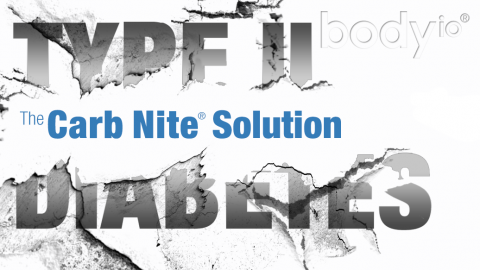recently went through an employer-incentivized health screening that assessed cholesterol, blood pressure, waist circumference, and BMI. The purpose was to determine if I was suffering from metabolic syndrome, a condition characterized by abdominal obesity, cholesterol imbalance, high blood pressure, insulin resistance/glucose intolerance, pro-inflammation, and a tendency toward blood clotting[1]. If I passed I would get a discount on my health insurance.
My blood pressure was in good shape as were my glucose, HDL and triglycerides (Thank you low carb eating!). But my weight of 250 lbs. and height of 6 foot 2.5 inches put me above the BMI definition of obesity (BMI > 30)[2]. My waist circumference was an inch over the 40-inch cutoff.
I passed the assessment but the results I got back said my waist circumference and BMI indicated I should lose weight.
About a week later I started receiving weekly emails about the company’s weight loss program. I received emails inviting me to join the company’s Weight Watchers® group. I also received emails asking and prodding me to lose weight in different ways: Was I planning to lose weight in the next month? Do I want to lose weight? Wouldn’t I feel better if I was 10 to 20 lbs. lighter? Did I know the benefits of a healthy weight?
I even received pamphlets mailed to my home about the company’s weight loss program with stories about the weight loss successes experienced by other employees.
The incessant emails and mailed pamphlets just made me angry. Basically, they were all saying, “Lose weight, fatso!”
The problem I had with all this weight loss urging was that I had no need or interest in dropping my weight! In fact, I wouldn’t mind gaining a few pounds more. I wasn’t that worried about being over the 40-inch cutoff for waist circumference. The actual cutoff can vary for different populations[3]. My main issue was with the BMI.
BMI as a Measure of Body Fat and Indicator of Health Risks
My BMI number led the company to conclude my weight must be due excess pounds of fat. This is because the BMI score is understood to be a measure of body fat. For example, there are online articles and BMI calculators that flat-out state that BMI is a measure of body fat[4,5]. One site flat out stated, “Because BMI is a simple calculation, anyone can use it to determine health risk due to excess body fat.”[6] Another site even offered an estimate of my body fat percentage based on my BMI[7]. The body fat estimate came back at 36%. That would give me a lean body mass of 162 lbs. and fat mass of about 90 lbs. Another online lean mass calculator[8] (based on only my weight and height) estimated my lean mass at 175.8 lbs. That would put me at 30% body fat. Yikes! No wonder the company was prodding me to lose weight.
Equating the BMI with body fatness has been supported by research showing a consistent positive correlation between the BMI and measures of body fat mass[9-13]. It also has lots of support as a clinical measure[14,15], strongly reinforced by its ease of being obtained, low cost[16], and many studies linking BMI-defined levels of obesity with numerous health risks[17-22] and higher healthcare costs[23-26]. BMI-defined obesity has been linked to higher risk of Type II diabetes, heart, and cardiovascular disease attributable to BMI-related metabolic syndrome[27-19].
The evidence for BMI is so strong that clinical practice guidelines encourage clinicians to refer patients with a BMI of 30 or more to intensive, multicomponent behavioral interventions[30]. No further assessments of body fat are required.
Not So Fast
With all the risks associated with BMI-defined obesity, why was I resistant to the weight loss prodding?
Despite broad support for the BMI as a measure of body fat, there is research questioning this relationship[31-33], especially when applied to individuals[34]. For example, the BMI may not adequately reflect changes in body composition with age based on changes in muscle and fat mass[35]. In addition, the association of the BMI with body fat percentage is not a straight line, but a curved one[36], so the correlation of the two does not capture their true relationship.
The BMI relationship to heart, cardiovascular, and metabolic health may also not be so clear cut. A 2016 study[37] sought to assess to what degree BMI correctly identified cardiometabolically healthy and unhealthy adults. The study was motivated by proposed rules allowing employers to penalize employees by making them pay a higher portion of their health insurance costs if they fail to meet specified BMI-defined “healthy” body fat levels.
My situation to a tee.
The study used a nationally representative sample of over 40,400 adults. Cardiometabolic health was assessed using blood pressure, triglyceride, cholesterol, glucose, insulin resistance and C-reactive protein levels. Height and weight was then used to classify study participants into the various BMI classifications.
The results were somewhat shocking. About half of BMI-defined overweight participants, 30% of BMI-defined obese participants, and 16% of BMI-defined obese type II and III participants were found to be metabolically healthy. In addition, more than 30% of BMI-defined normal weight participants were identified as cardiometabolically unhealthy. Projecting results to the U.S. population, the study estimated that nearly 75 million adults are erroneously classified as cardiometabolically unhealthy or cardiometabolically healthy.
Ouch!
Correct Use of the BMI
The fact is the BMI is not a direct measure of body fat. At best, it is an indicator of potential high body fatness[38]. More direct measures of body fat, such as skinfold thickness measurements, bioelectrical impedance, underwater weighing, or dual energy x-ray absorptiometry (DXA) are needed to determine if a high BMI for any given individual is a health risk due to excessive body fat.
Just because the BMI has strong correlations with direct measures of body fat doesn’t mean it is a substitute for them in every case. Dwayne (The “Rock”) Johnson is 6 foot 5 inches tall and weighs 262 lbs. His BMI is 31.1. During his pro-bodybuilding years, at 6 foot 2 inches tall, Arnold Schwarzenegger weighed 260 lbs. during the off season (BMI = 35) and weighed 236 lbs. at competition weight (BMI = 31.9)[39]. There are many other examples I could site.
The best use of the BMI is as a screening tool for identifying potential high body fatness. It does not diagnose body fat or the health of an individual. Unfortunately, all the research supporting its use as in indicator of body fat has led to compliancy and laziness. It’s cheap, easy, and provides a sense of false security when applied to individuals.
BMI and My Weight
In my article discussing the modeling of body recomposition, I shared the tracking results of my journey of dropping body fat and gaining muscle through a combination of resistance training and following a high protein, low carb diet guided by the principles of Carb-Backloading™, Carb Nite®, help from Body IO coach, Alex Navarro, and regular use of Carb Shock™. I reached an estimated 15% body fat based on a skinfold caliper sum of 38.5 mm using the average of three measurements at three sites.
At the time the employer assessed my BMI, it was about 14 weeks after the end of the tracking time I reported in the article. Now my estimated body fat mass was down to about 35 lbs.(14% body fat estimate) and my lean mass was up to 215 lbs., again based on an estimated three site skinfold sum of 35 mm. The BMI estimates of my lean mass and body fat were way, way off. Basically, my obesity was healthy obesity Type II – obesity due to higher muscle mass versus fat mass.
From the employer’s perspective, unfortunately, it did not matter. I was classified as obese and it meant I had too much adipose tissue (fat). No matter who I complained to, the weight loss messages kept coming. I had no recourse, no opportunity to correct the record. A casualty of the BMI.
[expand title=”References (click to expand)”]
- Grundy, S. M., Brewer, H. B., Cleeman, J. I., Smith, S. C., & Lenfant, C. Definition of metabolic syndrome report of the National Heart, Lung, and Blood Institute/American Heart Association Conference on scientific issues related to definition. Circulation, 2004; 109(3), 433-438.
- Centers for Disease Control and Prevention (CDC). About Adult BMI. https://www.cdc.gov/healthyweight/assessing/bmi/adult_bmi/index.html
- Misra, A., Wasir, J. S., & Vikram, N. K. Waist circumference criteria for the diagnosis of abdominal obesity are not applicable uniformly to all populations and ethnic groups. Nutrition, 2005; 21(9), 969-976.
- Understanding Weight: BMI & Body Fat. https://www.livescience.com/49752-weight-bmi-body-fat.html
- BMI Calculator. https://www.bmi-calculator.net/
- BMI – What Does the Body Mass Index Measure? https://www.verywell.com/bmi-what-is-bmi-or-body-mass-index-3120088
- Body Fat and Body Mass Index. https://www.dietandfitnesstoday.com/bodyfatAndBmi.php
- Lean Body Mass Estimator. https://www.healthstatus.com/calculate/lean-body-mass
- Steinberger, J., Jacobs, D. R., Raatz, S., Moran, A., Hong, C. P., & Sinaiko, A.R. Comparison of body fatness measurements by BMI and skinfolds vs dual energy X-ray absorptiometry and their relation to cardiovascular risk factors in adolescents. International Journal of Obesity, 205; 29(11), 1346-1352.
- Freedman, D. S., Thornton, J. C., Pi‐Sunyer, F. X., Heymsfield, S. B., Wang, J., Pierson, R. N., … & Gallagher, D. The body adiposity index (hip circumference÷ height1. 5) is not a more accurate measure of adiposity than is BMI, waist circumference, or hip circumference. Obesity, 2012; 20(12), 2438-2444.
- Bray, G. A. Don’t throw the baby out with the bath water. The American Journal of Clinical Nutrition, 2004; 79(3), 347-349.
- Freedman, D. S., & Sherry, B. The validity of BMI as an indicator of body fatness and risk among children. Pediatrics, 124(Supplement 1), 2009; S23-S34.
- Bouchard, C. BMI, fat mass, abdominal adiposity and visceral fat: where is the ‘beef’?. InternationalJournal of Obesity, 2007; 31(10), 1552-1553.
- Daniels, S. R. The use of BMI in the clinical setting. Pediatrics, 124(Supplement 1), 2009; S35-S41.
- Centers for Medicare & Medicaid Services (CMS) (2009, January). 2014 Clinical Quality Measures (CQMs) Adult Recommended Core Measures. https://www.cms.gov/Regulations-and-Guidance/Legislation/EHRIncentivePrograms/Downloads/2014_CQM_AdultRecommend_CoreSetTable.pdf
- Nguyen, D. M., & El-Serag, H. B. The epidemiology of obesity. Gastroenterology Clinics of North America, 2010; 39(1), 1-7.
- Pi-Sunyer, F. X. Health implications of obesity. The American Journal of Clinical Nutrition, 1991; 53(6), 1595S-1603S.
- Blair, S. N., & Brodney, S. Effects of physical inactivity and obesity on morbidity and mortality: current evidence and research issues. Medicine and Science in Sports and Exercise, 1999; 31, S646-S662.
- Mokdad, A. H., Ford, E. S., Bowman, B. A., Dietz, W. H., Vinicor, F., Bales, V. S., & Marks, J. S. Prevalence of obesity, diabetes, and obesity-related health risk factors, 2001. JAMA, 2003; 289(1), 76-79.
- Stommel, M., & Schoenborn, C. A. Accuracy and usefulness of BMI measures based on self-reported weight and height: findings from the NHANES & NHIS 2001-2006. BMC Public Health, 2009; 9(1), 1.
- Stommel, M., & Schoenborn, C. A. Variations in BMI and prevalence of health risks in diverse racial and ethnic populations. Obesity, 2010; 18(9), 1821-1826.
- Tirosh, A., Shai, I., Afek, A., Dubnov-Raz, G., Ayalon, N., Gordon, B., … & Rudich, A. Adolescent BMI trajectory and risk of diabetes versus coronary disease. New England Journal of Medicine, 2011; 364(14), 1315-1325.
- Arterburn, D. E., Maciejewski, M. L., & Tsevat, J. Impact of morbid obesity on medical expenditures in adults. International Journal of Obesity, 2005; 29(3), 334-339.
- Finkelstein, E. A., Trogdon, J. G., Cohen, J. W., & Dietz, W. Annual medical spending attributable to obesity: payer-and service-specific estimates. Health Affairs, 2009; 28(5), w822-w831.
- Bell, J. F., Zimmerman, F. J., Arterburn, D. E., & Maciejewski, M. L. Health‐Care Expenditures of Overweight and Obese Males and Females in the Medical Expenditures Panel Survey by Age Cohort. Obesity, 2011; 19(1), 228-232.
- Cawley, J., Meyerhoefer, C., Biener, A., Hammer, M., & Wintfeld, N. Savings in medical expenditures associated with reductions in body mass index among US adults with obesity, by diabetes status. Pharmacoeconomics, 2015; 33(7), 707-722.
- Malik, S., Wong, N. D., Franklin, S. S., Kamath, T. V., Gilbert, J. L., Pio, J. R., & Williams, G. R. Impact of the metabolic syndrome on mortality from coronary heart disease, cardiovascular disease, and all causes in United States adults. Circulation, 2004; 110(10), 1245-1250.
- Grundy, S. M. Obesity, metabolic syndrome, and cardiovascular disease. The Journal of Clinical Endocrinology & Metabolism, 2004; 89(6), 2595-2600.
- Meigs, J. B., Wilson, P. W., Fox, C. S., Vasan, R. S., Nathan, D. M., Sullivan, L. M., & D’Agostino, R. B. Body mass index, metabolic syndrome, and risk of type 2 diabetes or cardiovascular disease. The Journal of Clinical Endocrinology & Metabolism, 2006; 91(8), 2906-2912.
- Agency for Healthcare Quality and Research (AHQR)(2015, April). Screening for and Management of Obesity. https://www.ahrq.gov/professionals/prevention-chronic-care/healthier-pregnancy/preventive/obesity.html
- Kyle, U. G., Schutz, Y., Dupertuis, Y. M., & Pichard, C. Body composition interpretation: contributions of the fat-free mass index and the body fat mass index. Nutrition, 2003; 19(7), 597-604.
- Khongsdier, R. BMI and morbidity in relation to body composition: a cross-sectional study of a rural community in North-East India. British Journal of Nutrition, 2005; 93(01), 101-107.
- Meeuwsen, S., Horgan, G. W., & Elia, M. The relationship between BMI and percent body fat, measured by bioelectrical impedance, in a large adult sample is curvilinear and influenced by age and sex. Clinical Nutrition, 2010; 29(5), 560-566.
- Sharma, A. M., & Kushner, R. F. A proposed clinical staging system for obesity. International Journal of Obesity, 2009; 33(3), 289-295.
- Rothman, K. J. BMI-related errors in the measurement of obesity. International Journal of Obesity, 2008; 32, S56-S59.
- Meeuwsen, S., Horgan, G. W., & Elia, M. The relationship between BMI and percent body fat, measured by bioelectrical impedance, in a large adult sample is curvilinear and influenced by age and sex. Clinical Nutrition, 2010; 29(5), 560-566.
- Tomiyama, A. J., Hunger, J. M., Nguyen-Cuu, J., & Wells, C. Misclassification of cardiometabolic health when using body mass index categories in NHANES 2005–2012. International Journal of Obesity. 2016
- Centers for Disease Control and Prevention (CDC). Body Mass Index. https://www.cdc.gov/healthyweight/assessing/bmi/index.html
- Arnold Schwarzenegger Pro Bodybuilding Profile (2013, July 29). https://www.bodybuilding.com/fun/bodybuilders-arnold.htm
[/expand]












